- Finger Lakes Community College serves as a dynamic learning resource, empowering our students to succeed and fueling the cultural and economic vitality of the region.
School Highlights
Finger Lakes Community College serves 8,256 students (28% of students are full-time).
The college's student:teacher ratio of 40:1 is higher than the state community college average of 13:1.
Minority enrollment is 28% of the student body (majority Hispanic and Black), which is less than the state average of 62%.
Quick Stats (2025)
- Enrollment: 8,256 students
- In-state tuition: $5,112
- Out-state tuition: $6,144
- Student:teacher ratio: 40:1
- Minority enrollment: 28%
- Source: Verified school update
Top Rankings
Finger Lakes Community College ranks among the top 20% of public schools in New York for:
School Overview
The teacher population of 204 teachers has stayed relatively flat over five years.
Finger Lakes Community College
(NY) Community College Avg.
Carnegie Classification
Associate's Colleges: High Transfer-High Nontraditional
Baccalaureate/Associate's Colleges: Mixed Baccalaureate/Associate's
Institution Level
At least 2 but less than 4 years
At least 2 but less than 4 years
Institution Control
Public
Private not-for-profit
Total Faculty
204 staff
158 staff
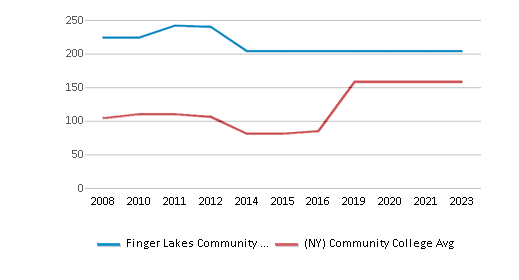
School Calendar
Student Body
The student population of Finger Lakes Community College has grown by 45% over five years.
The student:teacher ratio of 40:1 has increased from 28:1 over five years.
The Finger Lakes Community College diversity score of 0.47 is less than the state average of 0.76. The school's diversity has stayed relatively flat over five years.
Total Enrollment
8,256 students
746 students
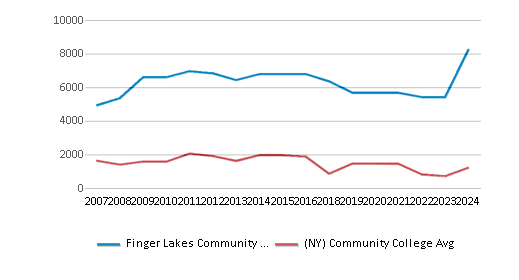
Student : Teacher Ratio
40:1
13:1
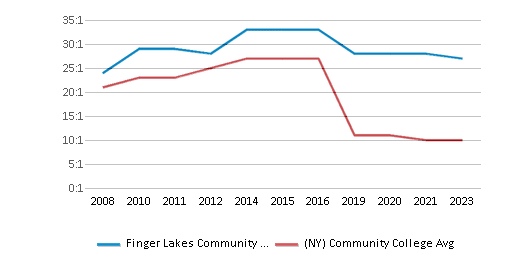
# Full-Time Students
2,314 students
519 students
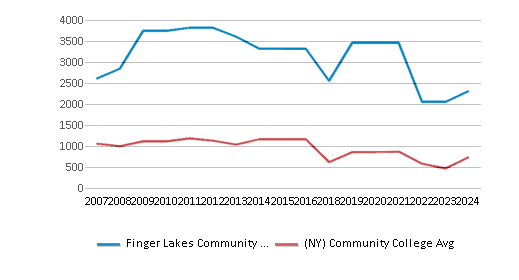
# Part-Time Students
5,942 students
514 students
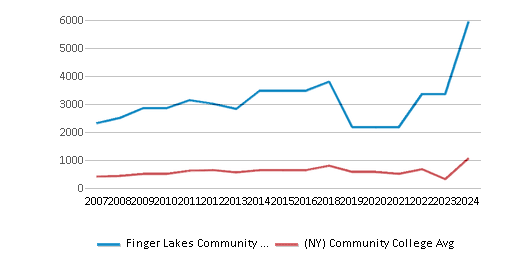

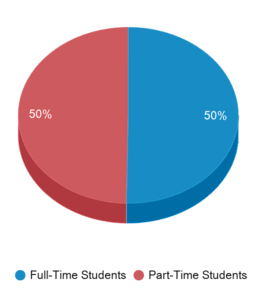
# Enrollment Undergraduate
825 students
357 students
# Full-Time Undergraduate Students
2,314 students
502 students
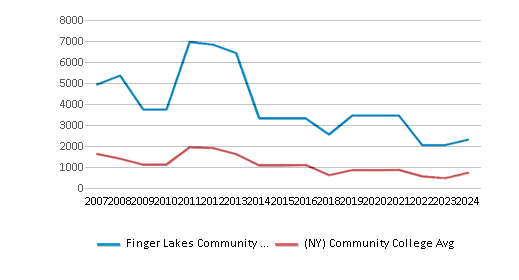
# Full-Time Graduate Students
n/a
44 students
# Part-Time Undergraduate Students
5,942 students
528 students
# Part-Time Graduate Students
n/a
41 students
Total Dormitory Capacity
353 students
382 students
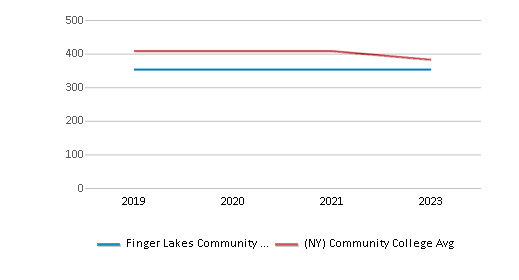
% American Indian/Alaskan
n/a
n/a
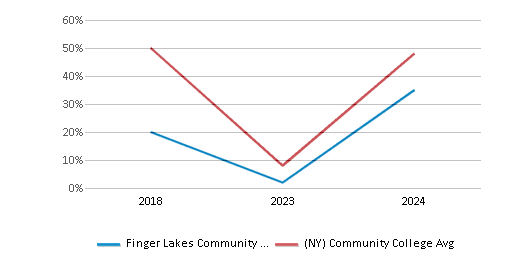
% Asian
3%
8%
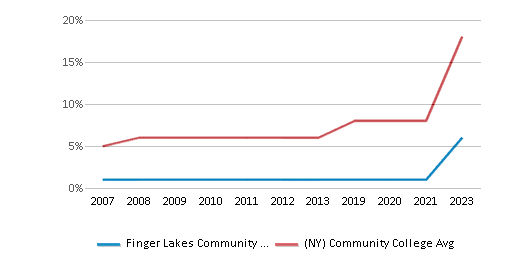
% Hispanic
8%
23%
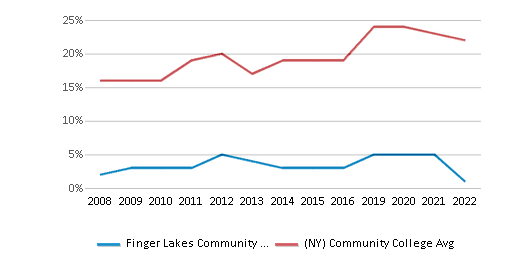
% Black
7%
18%
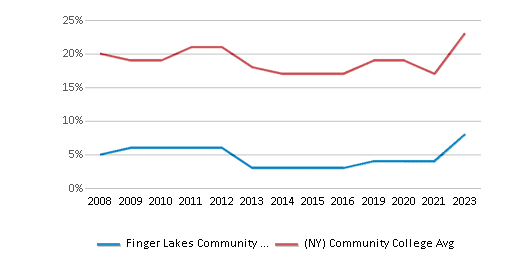
% White
72%
38%
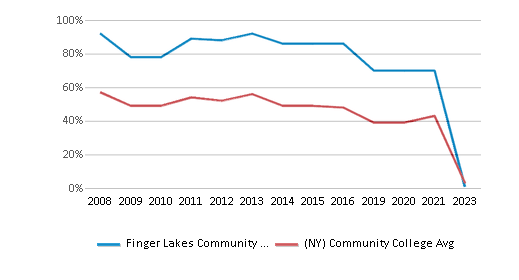
% Hawaiian
n/a
2%
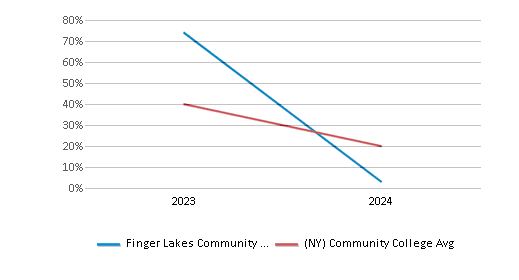
% Two or more races
2%
3%

% Non Resident races
n/a
3%
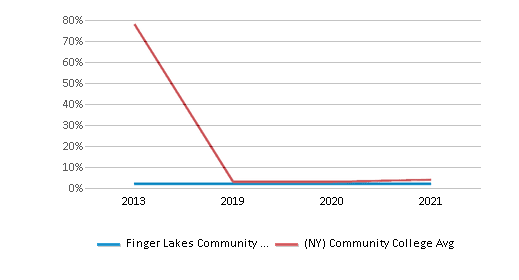
% Unknown races
8%
5%

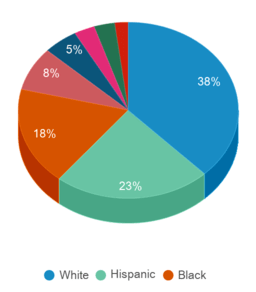
Diversity Score
0.47
0.76
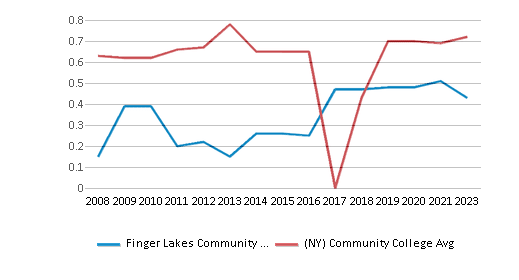
College Completion Rate (Students who graduate in less than 4 years)
0.2924%
0.3518%
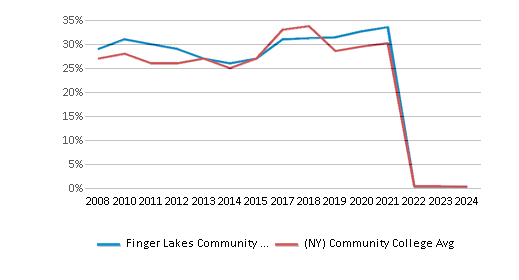
College Completion Rate (Students who graduate in 4 years or more than 4 years)
n/a
0.3957%
Average Graduate Earnings (10 Years)
$31,000
$35,200
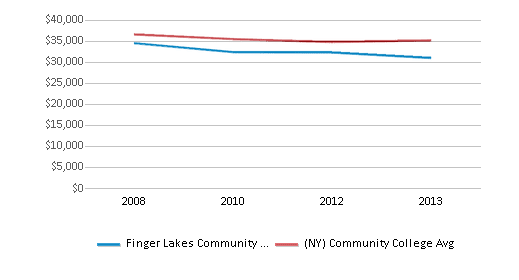
Tuition and Acceptance Rate
The public in-state tuition of $5,112 is less than the state average of $5,720. The in-state tuition has declined by 7% over four years.
The public out-state tuition of $6,144 is less than the state average of $10,320. The out-state tuition has declined by 5% over four years.
In-State Tuition Fees
$5,112
$5,720
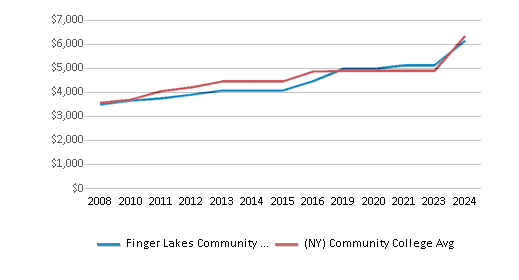
Out-State Tuition Fees
$6,144
$10,320
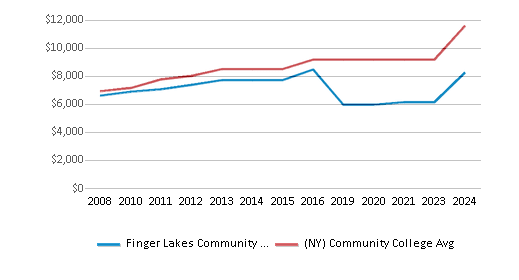
% Students Receiving Some Financial Aid
78%
88%
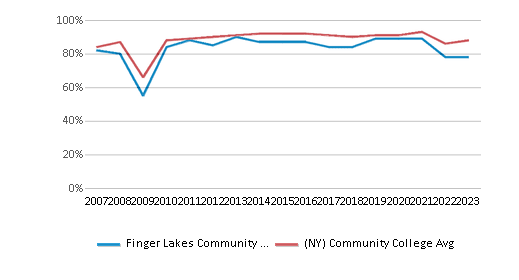
Median Debt for Graduates
$12,000
$13,841
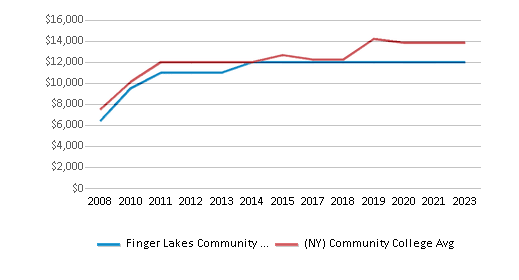
Median Debt for Dropouts
$6,200
$5,500
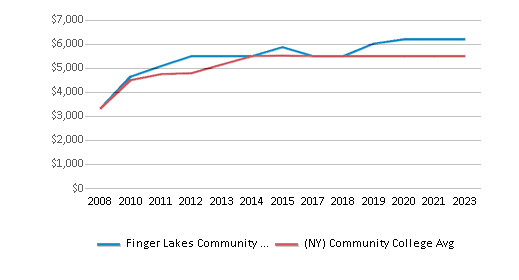
Acceptance Rate
n/a
74%
SAT Reading
n/a
475
SAT Math
n/a
505
SAT Writing
n/a
485
ACT Composite
n/a
20
ACT English
n/a
18
ACT Math
n/a
20
Sports
Total Sports Offered
8 sports
Sports
Baseball, Basketball, Cross Country, Lacrosse, Soccer, Softball, Track and Field, Volleyball
Source: 2024 (or latest year available) Integrated Postsecondary Education Data System (IPEDS)
School Notes
- FLCC's campus of more than 250 acres is located adjacent to the scenic and recreationally-rich Canandaigua community, in the heart of the Finger Lakes Region. The College has off-campus centers in Geneva, Newark, and Victor. The modern, multi-level campus includes science and computer laboratories, a simulated nursing hospital station, drafting rooms, technology-enhanced classrooms, a 900 square-foot television studio and control room, a recording studio, greenhouse, music rehearsal hall, gymnasium, and a library complex. Additionally, the College offers extensive computer resources for student learning. Other special FLCC features include landscaped and natural hiking trails, outdoor classrooms, athletic fields, a modern Child Care Center, the Muller Conservation Field Station located at the southern end of Honeoye Lake, and the Constellation Brands - Marvin Sands Performing Arts Center (MAC). Fifty-five percent of FLCC students graduate with A.S. or A.A. transfer degrees prepared for further study at four-year institutions. Others graduate with A.A.S. degrees or certificates prepared to obtain employment in their field of study. Finger Lakes Community College offers Honors courses, January Plan, distance learning classroom and SUNY Learning Network Courses, and Internships. The College also holds Joint Admissions Agreements and Transfer Agreements with public and private four-year colleges and universities that allow graduates to transfer their credits in pursuit of bachelor's degrees, while receiving full junior status. All courses of instruction at Finger Lakes Community College are registered with the Office of Higher Education of the State Education Department. Finger Lakes Community College is accredited by the Commission on Higher Education of the Middle States Association of College and Schools.
Frequently Asked Questions
How much does Finger Lakes Community College cost?
Finger Lakes Community College's tuition is approximately $5,112 for In-State students and $6,144 for Out-State students.
What sports does Finger Lakes Community College offer?
Finger Lakes Community College offers 8 interscholastic sports: Baseball, Basketball, Cross Country, Lacrosse, Soccer, Softball, Track and Field and Volleyball.
What is Finger Lakes Community College's ranking?
Finger Lakes Community College ranks among the top 20% of community college in New York for: Least expensive tuition and Largest student body.
Recent Articles

Obtaining Your Bachelor's Degree at a Community College
Explore the evolving landscape of community colleges offering bachelor's degrees, addressing affordability, accessibility, and workforce needs.

A to Z of Community College Certificates and Courses
From business and healthcare to technology and skilled trades, the article showcases the breadth of options available to students seeking to enhance their knowledge, develop new skills, or pursue career advancement.

What is a Community College?
This comprehensive guide explains what a community college is, its history, and its role in higher education. It covers the types of programs offered, differences from four-year colleges, benefits of attending, and important considerations for prospective students, providing valuable insights for those exploring educational options.









